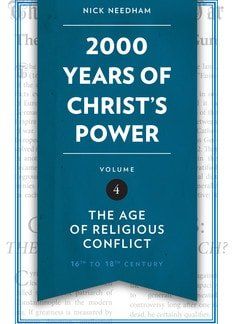This instructive account of the sad divisions that occurred in the church provides warnings about schism and its consequences. It is a must for ministers and academics, capturing the story of the church after Luther and Calvin.
The first chapter (heavy reading in places) describes the divisions that occurred within the Lutheran church and between this denomination and other Reformed churches. The sad state of affairs was captured by Melanchthon as he approached his death in 1560. He viewed his approaching demise as having the twofold advantage that, ‘it would free him from sin, and from the fury of theologians’ (p.16). Theological disputes weakened the Lutheran movement in the face of the Counter-Reformation, prompting the Formula of Concord, signed by two thirds of the German Lutheran leaders in 1577.
Later chapters describe further attempts to define the Protestant faith. These included the Synod of Dort (1618-19) — dealing with the Arminian controversy — and the Westminster Assembly of 1643. The Canons of Dort, Belgic Confession, Heidelberg Catechism, Westminster Confession and 1689 Baptist Confession were drawn up to protect the church from the errors of the time.
Following the Formula of Concord, many Lutherans became preoccupied with merely defending orthodoxy. Needham explains that Lutheran Pietism was partly ‘a reaction against Lutheran orthodoxy; Pietists felt it had become too dry, lacking in practical piety, and too obsessed with condemning the errors of others’ (p.61).
Arndt (1555-1621) wanted to ‘draw attention to Christ’s life in His people, as a corrective to Lutheran theology’s tendency to dwell almost exclusively on Christ’s death for His people’ (p.62). Spener (1635-1705) drew up a manifesto for spiritual renewal within the Lutheran churches called ‘Pia Desideria’ (p.65), which advocated small discussion groups, an active laity, emphasis on uniting Christians from Lutheran and Reformed backgrounds, reform of pastoral training, etc.
Spener was the mentor of Francke (1663-1727), pastor and professor at Halle. Francke was known for his compassion to street children. Pages 77-81 describe the early Lutheran pietistic missionaries sent out to India from Halle. These were prompted by the zealous Jesuit missions to India and China. One critic of some Pietists was Löscher (1673-1749).
He ‘was especially concerned that a right understanding of justification by faith was being lost amid all the zeal for Christian experience and holiness’ (p.74). Readers of this book might conclude that this basic doctrine hardly features during the interval covered. Readers may also harbour concerns about theologians interpreting Scripture by philosophical models and feel puzzled by the references to the spirituality of those who opposed the Reformed movement (chapter 6).
British readers will find chapters 3, 4 and 5 particularly interesting. They describe the formation of Independent and Baptist congregations. The chapters describe difficulties experienced by Protestants of all persuasions, who were opposed by Arminian Episcopalians backed by the Stuart dynasty.
These kings believed they were responsible to God alone and aimed to rule over the church by appointing their own bishops. Although James I was described as being Reformed, subsequent Stuart kings had increasing tendencies to Roman Catholicism. James II was openly Roman Catholic and attempted to impose this religion upon an unwilling population.
Sadly, conflict among Protestants is outlined throughout these chapters, reaching a low at the Battle of Dunbar in 1650, as English Independents fought Scottish Presbyterians. ‘Each side prayed and sang psalms to the same Lord. But only one side could win’ (p.401).
During the period under view, there were the obvious divisions between Roman Catholic and Protestant theologians. There were also divisions between a Catholic King of France and the pope, and divisions between Louis XIV and the Jansenists (a movement within the Roman Catholic Church recovering the Augustinian doctrine of grace).
There was also a schism between the two most powerful bishops in France over the Quietist movement, made famous by the sufferings of Madame Guyon. The book’s subtitle, ‘The age of religious conflict’ was well chosen!
Frederick Hodgson
Whitby



